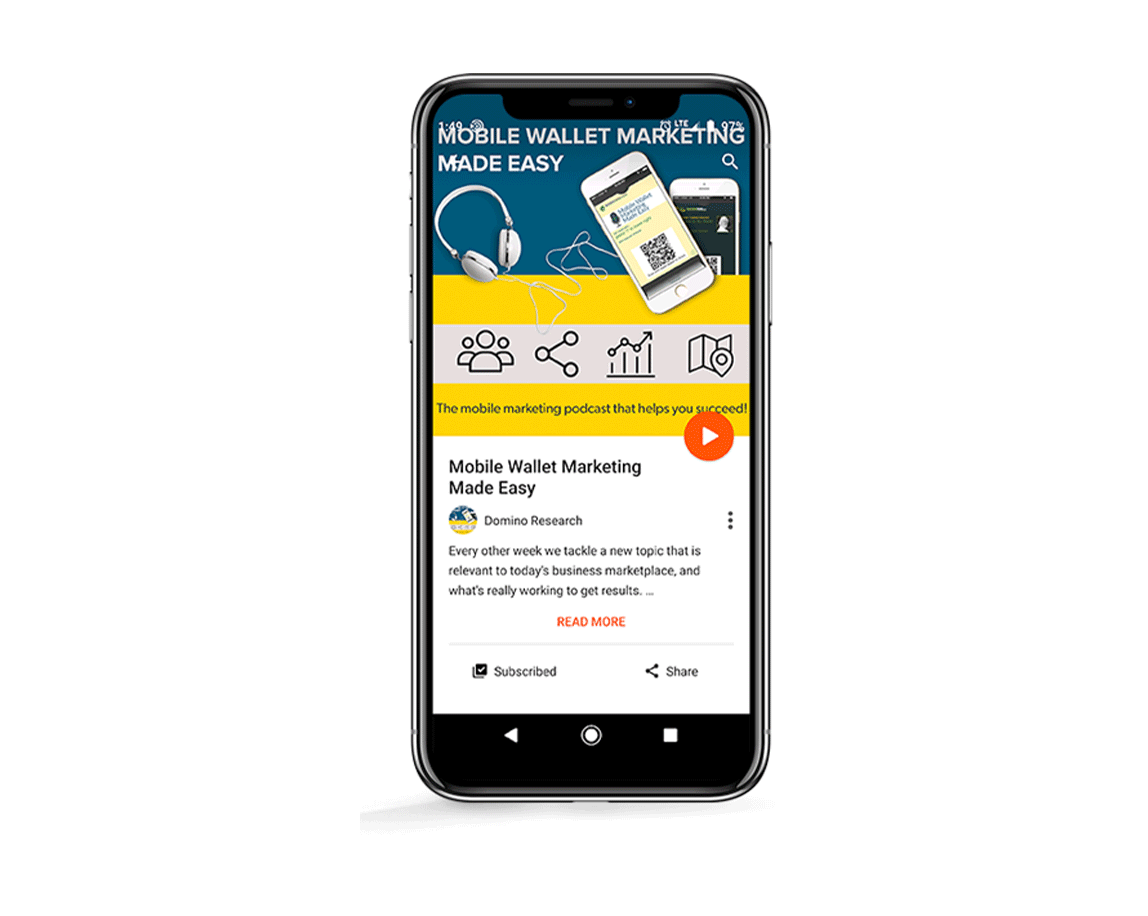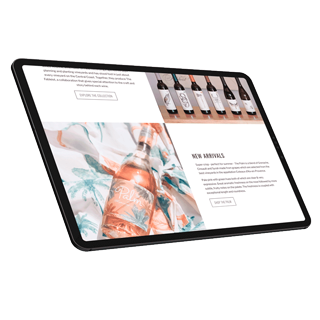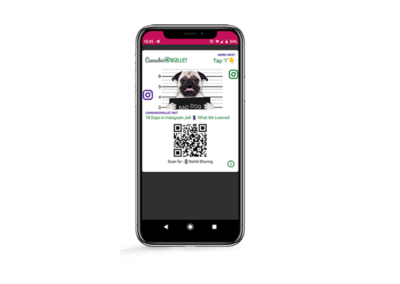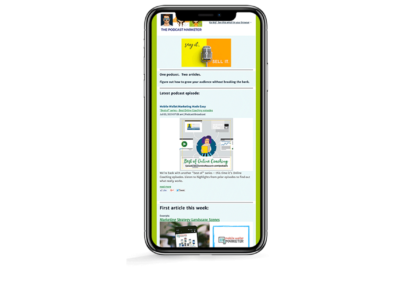#MobileFirst marketing is already here.
Mobile marketing campaigns are the primary driver of digital traffic today, and you likely already know that Google employs both the carrot and the stick when it comes to your site’s responsiveness to varying screen sizes, with the primary focus being on mobile friendly sites.
Looking to leverage mobile marketing campaigns but unsure which app type best suits your needs? I offer nearly a decade of experience in designing and deploying mobile solutions across various platforms.
Whether you require an operating system (OS) specific app for iPhones or Android, or prefer a cross-platform progressive web app (PWA) built with HTML5, I can create the ideal tool to enhance your mobile marketing campaigns.
My experience spans a wide range of functionalities, including payment processing apps, e-commerce platforms, podcasting and vlogging tools, appointment scheduling aids, and more.
But wait, maybe you don’t really need an app to create great mobile marketing campaigns…
Extending the #MobileFirst philosophy to deploying ad campaigns designed for mobile devices is the next step. There’s no need to create an app of your own – it’s much more time and cost efficient to leverage existing platforms like Apple Wallet or Android OS wallet apps, like Google Wallet. Incorporate email marketing to gain double exposure on every campaign we deploy for you.
Utilizing mobile wallets for mobile marketing campaigns is one of the best kept secrets in digital marketing land, in case you haven’t heard of it. There are a number of options for back end connectivity and push notification delivery, and the costs are much more efficient than using SMS for mobile marketing message delivery.
Dominate the Mobile Landscape: A Comprehensive Guide to Mobile Marketing Campaigns
In today’s hyper-connected world, mobile devices are no longer just a communication tool – they’re an extension of ourselves. Consumers are constantly glued to their smartphones and tablets, seamlessly integrating them into every aspect of their lives, from checking emails and browsing social media to researching products and making purchases.
This presents a unique and powerful opportunity for businesses: the ability to reach them directly and effectively through targeted mobile marketing campaigns.
When you book a consultation with me – your trusted mobile marketing expert – you’ll find yourself armed with the knowledge and strategies to develop winning mobile marketing campaigns. We’ll delve deep into the ever-evolving mobile marketing landscape, exploring various campaign types, proven best practices, and actionable insights to help you:
- Engage your target audience on their preferred platform: mobile.
- Drive conversions and achieve your marketing goals.
- Stay ahead of the curve in this dynamic and competitive space.
- Work within a less regulated framework via wallet apps versus SMS marketing and messaging.
The Rise of Mobile and Why It Matters
The mobile marketing landscape is experiencing explosive growth. Consider this: The average person spent a mere 1.72 hours per day on their smartphone in 2014. Fast forward to 2024, and that number has jumped to a whopping 5.24 hours daily – a nearly threefold increase in just ten years!
This surge in mobile adoption signifies a fundamental shift in consumer behavior. Traditional marketing tactics, while still valuable, are no longer sufficient to capture the attention and loyalty of today’s mobile-first consumers. Businesses must adapt their strategies to this new reality and leverage the power of mobile marketing campaigns to thrive.
Mobile Marketing Campaign Types: A Strategic Arsenal
Mobile marketing campaigns come in a variety of shapes and sizes, each catering to specific goals and objectives. Understanding the various options empowers you to create a targeted and impactful campaign. Here’s a breakdown of some of the most popular and effective mobile marketing campaign types:
SMS Marketing: Reach your audience directly with permission-based text messages. This offers a highly personal and engaging touchpoint. Promote special offers, announce new product launches, or reward loyal customers with exclusive discounts and deals through targeted SMS campaigns.
Mobile App Marketing: Develop a user-friendly mobile app to cultivate a deeper connection with your customers. Your app can provide a convenient shopping experience, offer exclusive features and loyalty programs, and facilitate seamless communication. Invest in mobile app marketing strategies to drive app downloads, user engagement, and ultimately, brand advocacy.
Push Notifications: Send timely and relevant notifications directly to users’ smartphones, keeping them informed on the go. Push notifications can be used for a variety of purposes, such as announcing flash sales, reminding customers about abandoned carts, or promoting upcoming events. However, it’s crucial to utilize them strategically to avoid overwhelming users and ensure they deliver value.
Location-Based Marketing: Harness the power of location data to deliver targeted messages and promotions based on a user’s physical location. Imagine a restaurant sending a discount notification to users within a specific radius, or a clothing store offering personalized recommendations based on a customer’s browsing history in a nearby mall. Location-based marketing offers a powerful way to reach highly relevant audiences at the right time and place.
Mobile Social Media Marketing: Engage your target audience on the social media platforms they actively use, like Facebook and Instagram. Develop mobile-optimized content – captivating images, engaging videos, interactive polls – to capture attention and spark conversations. Utilize social media advertising to reach a wider audience and leverage influencer marketing partnerships to tap into established credibility and reach.
Building a Winning Mobile Marketing Strategy: A Roadmap to Success
Crafting a successful mobile marketing campaign requires a well-defined strategy that considers your target audience, goals, and resources. Here’s a step-by-step roadmap to guide you through the process:
Identify Your Target Audience: Who are you trying to reach? Understanding your ideal customer’s demographics, needs, mobile usage habits, and preferred platforms is crucial. Conduct market research, analyze customer data, and develop buyer personas to create a clear picture of your target audience.
Set SMART Goals: Clearly define your campaign goals using the SMART framework.
- Specific: What exactly do you want to achieve? Is it increased brand awareness, driving app downloads, or boosting website traffic?
- Measurable: How will you track progress and success? Identify relevant metrics like click-through rates, conversion rates, or app downloads.
- Attainable: Set realistic and achievable goals based on your budget and resources. Relevant: Ensure your goals align with your overall marketing objectives and business strategy.
- Time-Bound: Establish a timeframe for achieving your goals.
Choose the Right Campaign Type: Select the mobile marketing campaign type that best aligns with your SMART goals and target audience. Consider the specific benefits and reach of each channel to make an informed decision.
Craft Compelling Content: Develop engaging and mobile-friendly content that resonates with your audience and encourages interaction. Remember, mobile users have limited attention spans, so your content needs to be concise, visually appealing, and optimized for smaller screens. Here are some tips for creating compelling mobile marketing content:
Focus on benefits: Clearly communicate how your product or service improves your audience’s lives.
Utilize strong visuals: High-quality images, infographics, and short videos can grab attention and enhance user experience.
Keep it concise: Use clear and concise language, avoiding lengthy text blocks.
Optimize for mobile: Ensure your content is easy to read and navigate on smartphones and tablets. This includes using large fonts, clear calls to action (CTAs), and responsive design.
Incorporate storytelling: People connect with stories. Use captivating narratives to showcase your brand values and build emotional connections with your audience.
Optimize for Conversions: Don’t just capture attention; encourage action. Integrate clear and compelling CTAs throughout your mobile marketing campaigns. Tell your audience exactly what you want them to do, whether it’s visiting your website, downloading your app, or making a purchase. Make the desired action effortless by ensuring seamless landing pages and a smooth user experience.
Leverage Data and Analytics: Data is your friend in the ever-evolving world of mobile marketing. Utilize analytics tools to track campaign performance, monitor key metrics, and gain valuable insights. Analyze user behavior, identify areas for improvement, and constantly optimize your campaigns for better results. A/B testing different content formats, CTAs, and delivery times can reveal valuable insights to maximize engagement and conversions.
Embrace Omnichannel Marketing: While mobile marketing campaigns are powerful, they’re most effective when integrated with a broader omnichannel marketing strategy. This means creating a cohesive experience across all touchpoints – social media, email marketing, your website, and even physical stores. Ensure consistency in messaging, branding, and user experience across all channels to create a unified and memorable brand presence.
Prioritize Mobile Security: With mobile marketing, security should be a top priority. Consumers become increasingly wary of sharing their personal information. Ensure your campaigns adhere to data privacy regulations and implement robust security measures to protect user data.
Partner with me for Mobile Marketing Mastery
The mobile marketing landscape is dynamic and ever-changing. Navigating this space and developing winning campaigns requires expertise, experience, and a data-driven approach. At Kim Stuart Digital, we’re your trusted mobile marketing partner. We offer a comprehensive suite of services designed to help you achieve your mobile marketing goals:
- Strategic Planning: We collaborate with you to develop a customized mobile marketing strategy that aligns with your business objectives and target audience.
- Creative Development: Our experienced team creates compelling mobile-optimized content, engaging visuals, and impactful CTAs to capture attention and drive conversions.
- Campaign Management: We handle the entire campaign lifecycle, from planning and execution to performance monitoring and optimization.
- Data Analysis and Reporting: We provide you with actionable insights and comprehensive reports to track progress and optimize your campaigns for maximum impact.
Mobile marketing presents a tremendous opportunity to reach a vast and engaged audience directly on their most-used devices. By implementing the strategies outlined in this guide, you can develop and execute winning mobile marketing campaigns that drive engagement, conversions, and ultimately, business growth.
Contact me today to schedule a consultation and discuss how we can help you unlock the full potential of mobile marketing.




